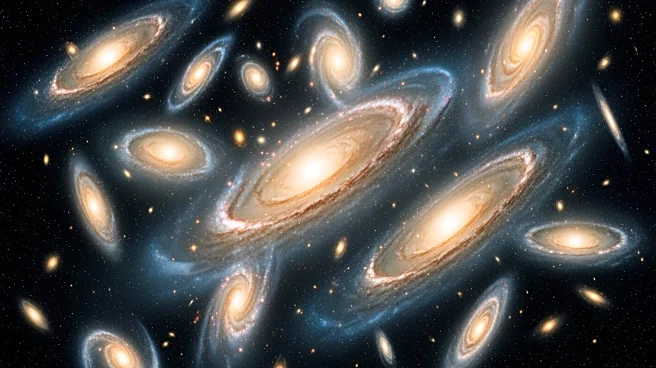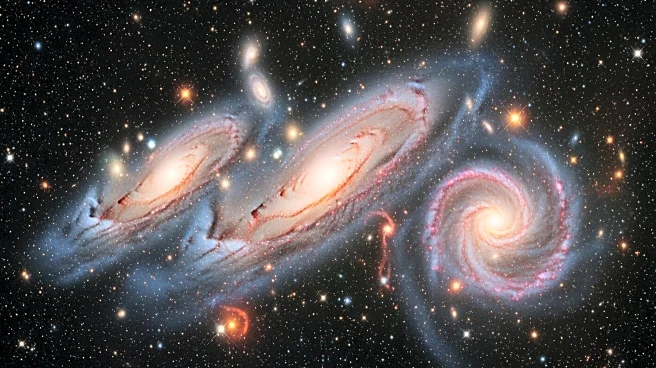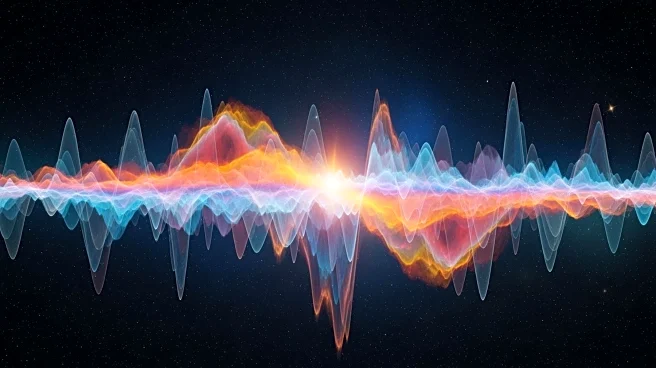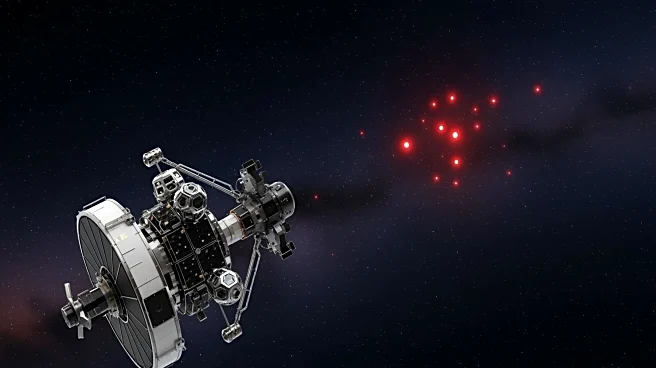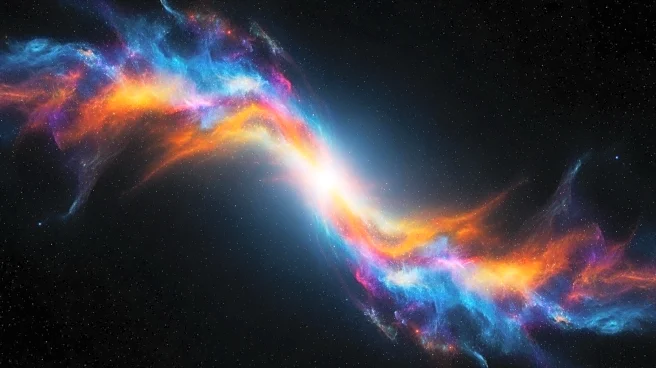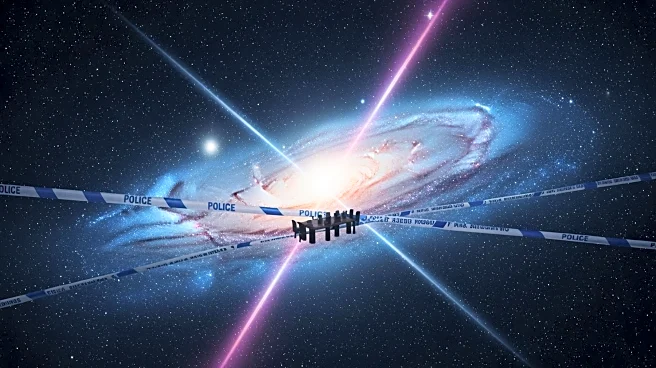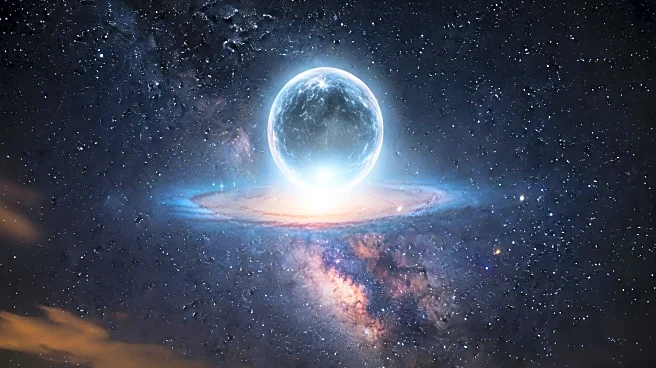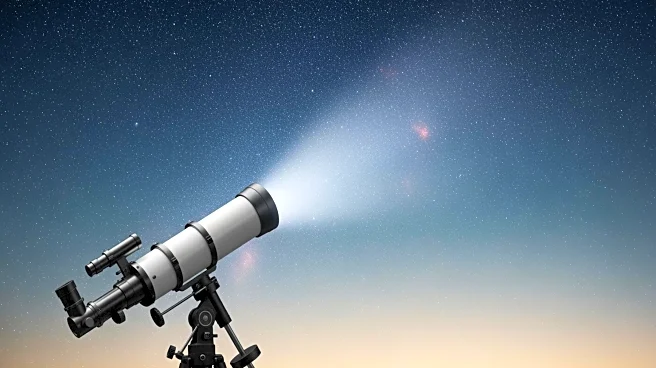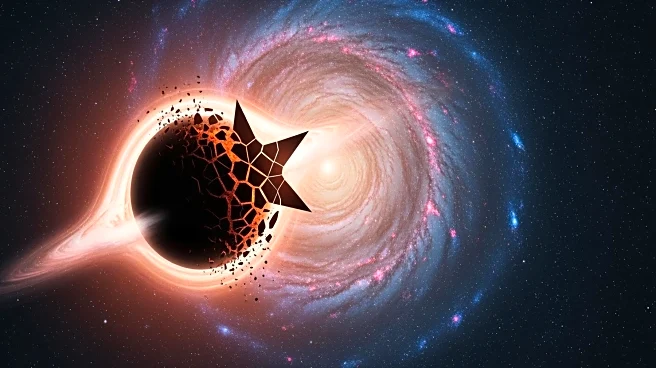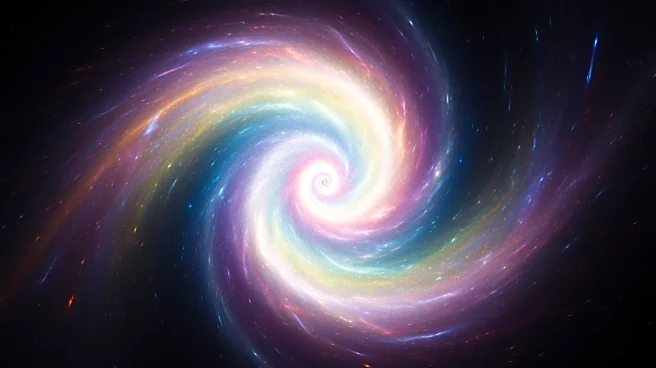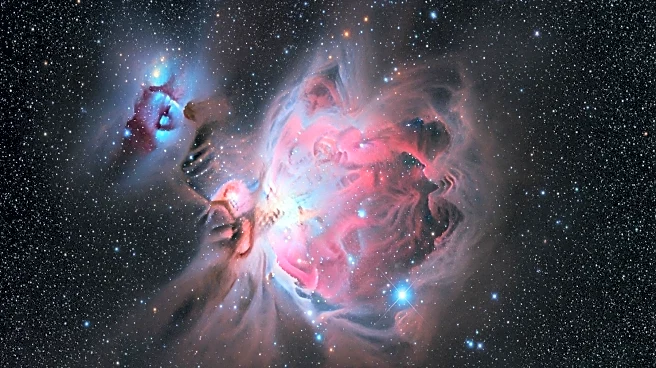What's Happening?
Astronomers using the James Webb Space Telescope (JWST) have provided the most detailed observations yet of galaxy formation in the early universe, revealing that these galaxies were far more chaotic than
those seen today. The research, led by the University of Cambridge, analyzed over 250 young galaxies from 800 million to 1.5 billion years after the Big Bang. The study found that these galaxies were turbulent and 'clumpy,' lacking the smooth rotating disks characteristic of modern galaxies like the Milky Way. The findings, published in the Monthly Notices of the Royal Astronomical Society, suggest that galaxies became more ordered as the universe evolved, with early star formation and gravitational instabilities causing significant turbulence.
Why It's Important?
This research is significant as it provides insights into the evolution of galaxies from chaotic beginnings to the structured forms seen today. Understanding the dynamics of early galaxies helps bridge the gap between the epoch of reionization and the peak of star formation known as 'cosmic noon.' The study challenges previous models that suggested early formation of massive, well-ordered disks, instead showing a broader picture of turbulence and instability. These findings have implications for astrophysics, offering a clearer understanding of galaxy formation and evolution, which is crucial for comprehending the universe's history and development.
What's Next?
Future studies will aim to combine these findings with observations of cold gas and dust to create a more comprehensive picture of early galaxy formation. Researchers plan to use additional data from JWST to track the evolution of these turbulent systems into the structured spirals observed today. This ongoing research will continue to refine models of galaxy formation and provide deeper insights into the processes that shaped the universe.
Beyond the Headlines
The study highlights the capabilities of the JWST in probing galaxy dynamics at unprecedented scales, offering new opportunities for understanding cosmic history. The research also underscores the importance of technological advancements in telescopes and data analysis, which enable scientists to explore previously inaccessible aspects of the universe.
